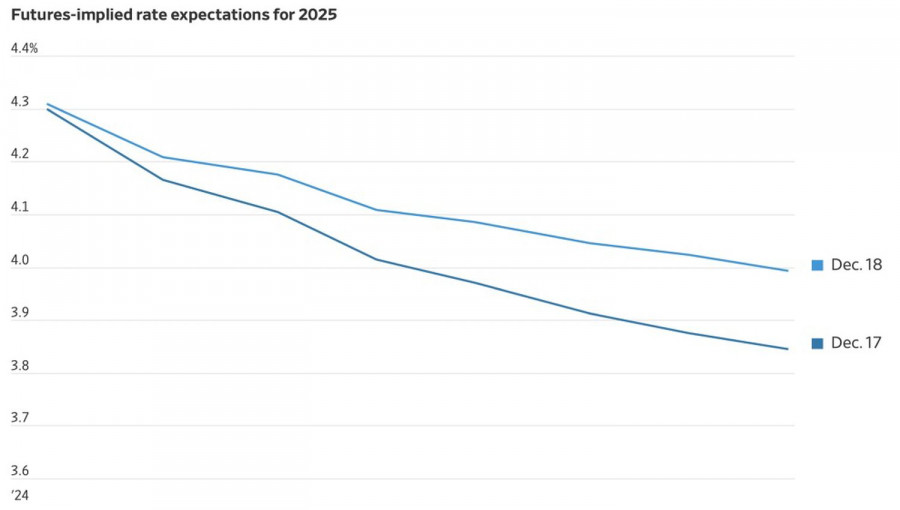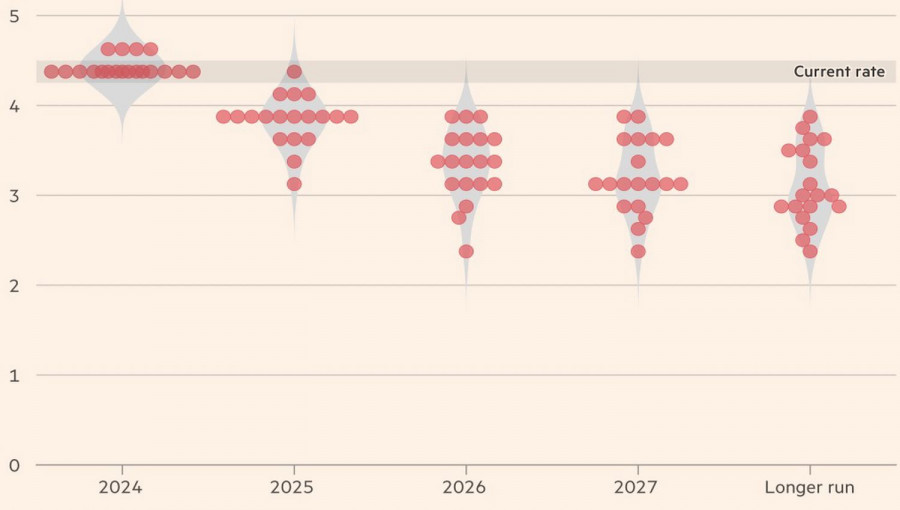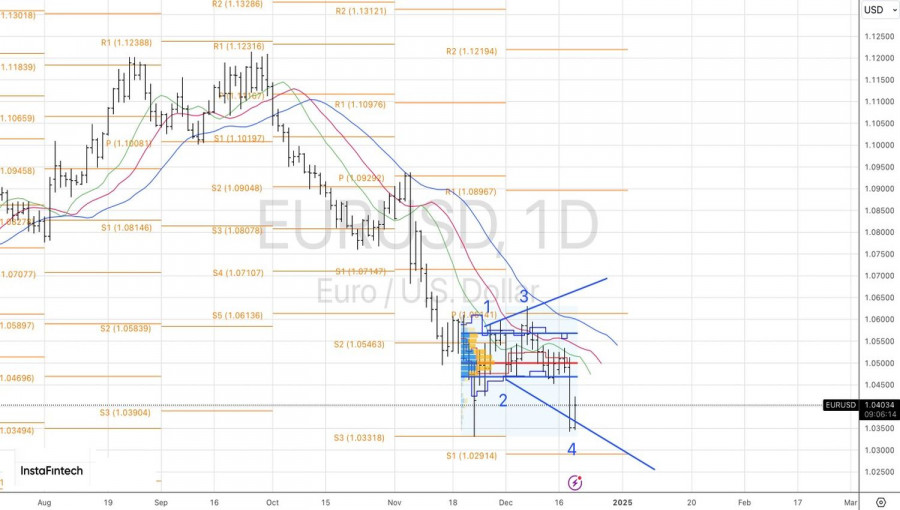Fear often magnifies risks. The December FOMC forecast suggests two rate cuts of 25 basis points each in 2025, but nervous investors have interpreted this as the end of the Federal Reserve's monetary easing cycle. As a result, U.S. Treasury yields surged at their fastest pace since 2013, and EUR/USD plunged to a two-year low. Has monetary easing come to an end?
The futures market assigns a 91% probability that the federal funds rate will remain at 4.5% in January and a 51% chance that the Fed will maintain this pause through March. The central bank needs time to assess inflation trends. According to its forecasts, the personal consumption expenditures (PCE) index will be at 2.5% in 2025, up from the previous estimate of 2.2%. However, this figure likely does not account for the impact of Donald Trump's tariffs on the U.S. economy.
Market Expectations for Fed Rates

Research from Goldman Sachs suggests that import tariffs will add 0.3 percentage points to core inflation in the U.S., with most of the effect dissipating by 2026. While this isn't a significant increase, considering the already elevated CPI levels and the duration of inflation staying above the 2% target, the Fed might opt for caution and refrain from lowering rates further.
This cautious stance would likely anger Donald Trump, who might accuse the Fed of loosening monetary policy under Democratic leadership while pausing it under Republican rule. However, based on Jerome Powell's comments, the Fed seems resolute in its approach.
One of the 12 voting FOMC members opposed the December rate cut, and 14 out of 19 participants do not see the federal funds rate falling below 4% by the end of 2025. These facts have led Forex analysts to dub the easing policy a "hawkish cut," strengthening the U.S. dollar against major global currencies, including the euro.
Fed Projections for Federal Funds Rate

If the Fed's monetary easing cycle has indeed ended while the European Central Bank continues lowering rates, the euro is in for trouble. Parity in EUR/USD appears to be a natural reaction to policy divergence—though things could be worse. In 2000, EUR/USD dropped to 0.825 and traded below parity from December 1999 to August 2002. Time will tell how it unfolds this time.

While markets digest the outcomes of the December FOMC meeting and debate the duration of the Fed's pause, some speculators are taking profits on shorts, allowing the euro to gain slightly. But how long can the bulls sustain this momentum?
Technically, the daily chart still leaves room for the "Broadening Wedge" pattern to play out, though it seems unlikely. A necessary condition would be for the pair to return to its fair value at 1.050. With slim odds of that happening, the focus remains on selling the euro toward $1.012 and $1.000.
The material has been provided by InstaForex Company - www.instaforex.comfrom Forex analysis review https://ift.tt/5O4WvKJ
via IFTTT
